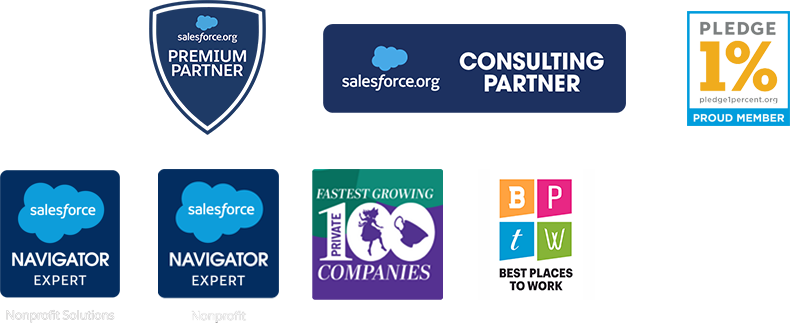Empowering Global Change: Building Agile Tech Teams in Humanitarian Organizations
In an era of global challenges—from climate disasters to protracted conflicts—humanitarian organizations are increasingly turning to technology as a force multiplier. From refugee camps in remote areas to bustling urban centers, tech teams are creating innovative solutions to address complex issues with unprecedented speed and efficiency. But how do these organizations build and maintain agile tech teams capable of responding to urgent crises while fostering long-term innovation?
To answer this question, we spoke with leaders from World Food Program USA (WFP USA), Islamic Relief USA (IR USA), and the International Rescue Committee (IRC). Their insights, combined with broader trends in the humanitarian sector, reveal a landscape where technology isn't just a tool, but a crucial component in the mission to serve those in need. Below, we’ll highlight key strategies for building resilient teams, leveraging innovative tools, and navigating a rapidly evolving landscape.
Building Diverse and Adaptable Teams
One of the key challenges humanitarian organizations face is assembling tech teams with the right mix of skills, adaptability, and mission alignment. To succeed in this, the leaders we spoke with are adopting strategies like:
- Recruiting for Complementary Skillsets: Building small but dynamic teams with diverse expertise, ensuring each member brings unique strengths to the table.
- Nurturing Talent Pipelines: Combining early-career recruitment with ongoing training to develop and retain skilled professionals.
- Offering Mission-Driven Benefits: Competing with private tech companies by providing unique incentives such as field experiences, flexible work arrangements, and opportunities to make a direct impact.
- Promoting Diversity and Inclusion: Emphasizing culturally sensitive solutions through teams that better reflect the communities they serve.
These strategies not only strengthen team capacity but also foster innovation and inclusivity, creating an environment where technology solutions can thrive.
Leveraging Technology for Efficiency and Impact
Technology plays a critical role in enhancing the efficiency and capacity of IT teams at humanitarian organizations. Key approaches include:
- Integrated Systems: Transitioning from siloed tools to platforms that enable data sharing and collaboration across departments, providing a holistic view of operations and beneficiaries.
- Custom Tech Solutions: Developing tailored systems, such as customized Salesforce integrations, to streamline workflows and meet organizational goals.
- Demand Management Tools: Implementing systems and ticketing platforms to prioritize tech requests and ensure transparency.
- Mobile-First Strategies: Designing apps and websites optimized for mobile use to reach underserved communities where smartphones are the primary digital access point.
By adopting these tools and strategies, IT teams can maximize their impact, ensuring resources are used effectively while maintaining focus on their mission.
Crisis Response and Agility
Rapid response capabilities are essential in the humanitarian sector. Organizations are employing the following strategies to empower their IT teams for fast response:
- Turn-Key Crisis Solutions: Establishing processes and tools that can be activated within hours of an emergency, enabling quick deployment of email campaigns, forms, and text messages.
- Cloud-Based Infrastructure: Utilizing DevOps practices and cloud platforms for rapid scaling and deployment.
- Predictive Analytics: Leveraging big data to anticipate crises like food shortages or refugee movements, allowing for proactive interventions.
These practices ensure organizations can adapt quickly to ever-changing challenges, equipping their team with the tools and resources to respond to crises.
Fostering Innovation for Long-term Success
Balancing immediate needs with long-term innovation is crucial for addressing complex global issues. Humanitarian tech teams are advancing innovation through:
- AI Integration: Exploring artificial intelligence to enhance decision-making and optimize operations.
- Strategic Partnerships: Collaborating with contractors, consultants, and academic institutions to access specialized expertise.
- Ethical Frameworks: Prioritizing data privacy, digital rights, and equitable technology deployment to avoid exacerbating inequalities.
By investing in innovation, organizations position themselves to tackle future challenges with creativity and foresight.
The Road Ahead
As global challenges grow, the role of technology in humanitarian aid will only expand. Building effective tech teams requires a focus on agility, cultural sensitivity, and ethical practices, all while remaining deeply committed to mission-driven work.
Keep in mind:
- Technology is no longer optional; it’s essential for maximizing impact.
- Innovation labs, partnerships, and cutting-edge tools are driving transformative change.
- Rapid response systems and predictive analytics are shaping the future of crisis management.
The challenges ahead—climate change, political instability, and growing inequality—demand bold solutions. But with the right tools and a dedicated approach, humanitarian organizations can rise to meet these demands, making a profound difference in the lives of millions. The future of humanitarian aid is digital, and it’s being shaped every day by resilient and innovative tech teams.
To connect with our community and stay up to date on all things technology for nonprofits, follow along with us on LinkedIn by clicking the button below.















